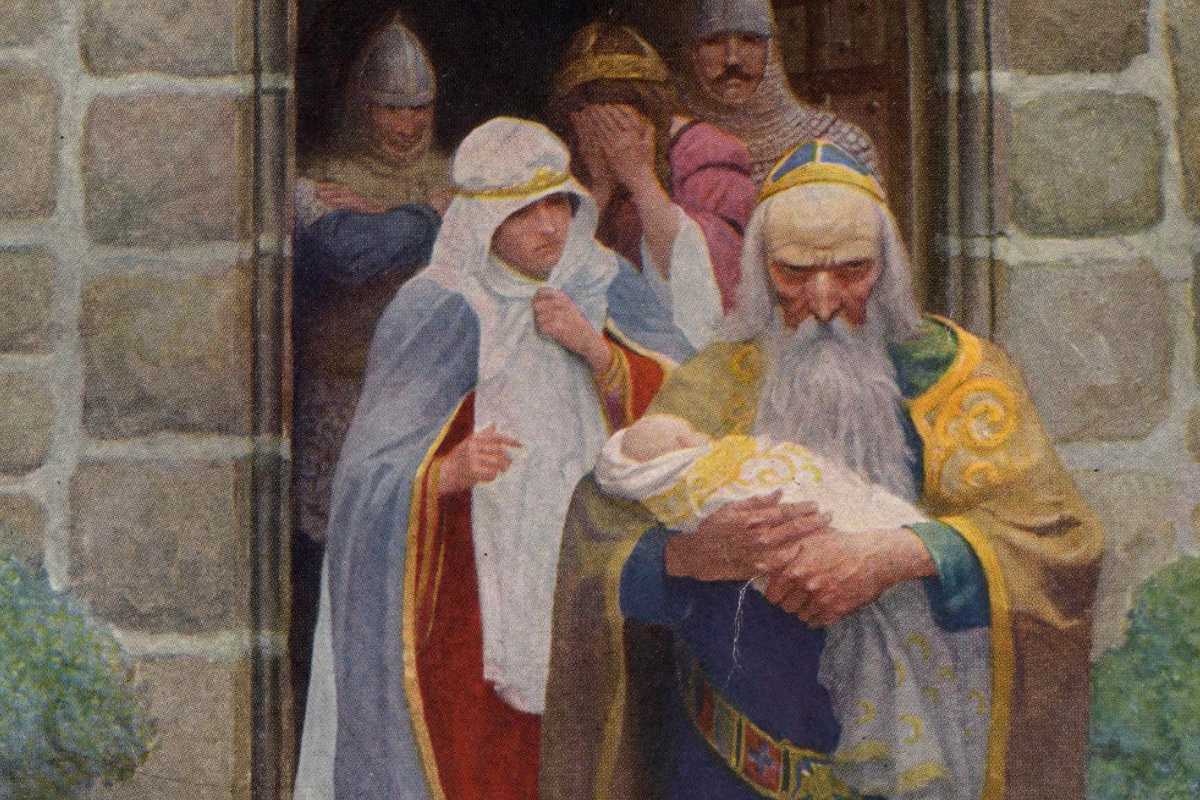
The fragments, carelessly tucked away in the bindings of other books in the fifteenth century, date from the early thirteenth century.
This is the opinion of British researchers after they have examined the seven fragments in detail. However, their research not only results in a fairly accurate dating of the fragments; the scientists also managed to read the entire text – which was no longer visible to the naked eye due to damage in places. They also managed to determine what kind of ink the writer used to put Merlin’s story on parchment.
Discovery
The text fragments in question were discovered more or less by accident as early as 2019 when researcher Michael Richardson examined four books written between 1494 and 1502, which are part of the rare book collection of Bristol Central Library. The fragments turned out to be glued into the binding of these books.
Dating
It soon became clear that these were fragments from the legend of Merlin. The researchers also quickly saw that they were old fragments. But now they are actually dated. “We were able to date the manuscript that the fragments are part of through an analysis of the handwriting,” said study researcher Leah Tether. The dating indicates that the fragments appeared between 1250 and 1275 (and this must have happened – again judging by an analysis of the text – in the north or north-east of France). According to the researchers, the fragments contain some of the oldest examples of these sections of Merlin’s story.
The excerpts come from a text known as Suite Vulgate du Merlin. “That text was written between 1220 and 1225,” says Tether. It means that the manuscript fragments of which are now found in Bristol was born quite shortly after the author of the original legend wrote it down. The manuscript would also have found its way from France to England not long afterwards. “We know from a margin note—which we have re-dated the manuscript and noted by an Englishman—that the manuscript was already in England between 1300 and 1350.”
Valuable
The new information makes the fragments even more valuable if possible. “Most of the manuscripts of this text that we know of were in England during the Middle Ages were completed after 1275. So this is not just a particularly early example of Suite Vulgatemanuscripts in general,” says Tether. Also looking purely at the manuscripts that came to England from France in the Middle Ages, the fragments were part of an early copy.
Reused
As valuable as the fragments are today, so carelessly were they reused for other texts centuries ago. And as binding material. Why the manuscript was discarded is unclear. It may have to do with the emergence of newer, English versions of the Arthurian legend.
Differ
Incidentally, after analyzing the fragments that have surfaced in Bristol, the researchers must conclude that this early version of Merlin’s story differs from later versions on a number of points. For example, the researchers noticed that in certain parts of the old text the actions of different characters are described in much more detail. In addition, the text also differs in details. For example, both the thirteenth century fragments and more modern versions of the story of King Claudas being injured, but where the fragments do not explain the injuries, modern versions indicate that the injuries are to the thighs. That may seem unimportant, but to past listeners it could have made a world of difference, as an injury to the thigh was often a metaphor for impotence or castration.
Ink
In addition to the text, the researchers also examined the ink of the fragments. This turns out to be made with the help of soot particles. This is quite remarkable, because at that time ink was usually made from gall nuts. The researchers argue that the fact that the writer who chose the fragments for other components may have to do with what was and was not available in his environment.
The discovery of these ancient fragments is undoubtedly not the latest startling news to emerge from the Bristol Central Library comes to set. According to researchers, the extensive book collection contains even more surprises.
Source material:
“Bristol manuscript fragments of the famous Merlin legend among the oldest of their kind” – University of Bristol
Image at the top of this article: NC Wyeth (via Wikimedia Commons)